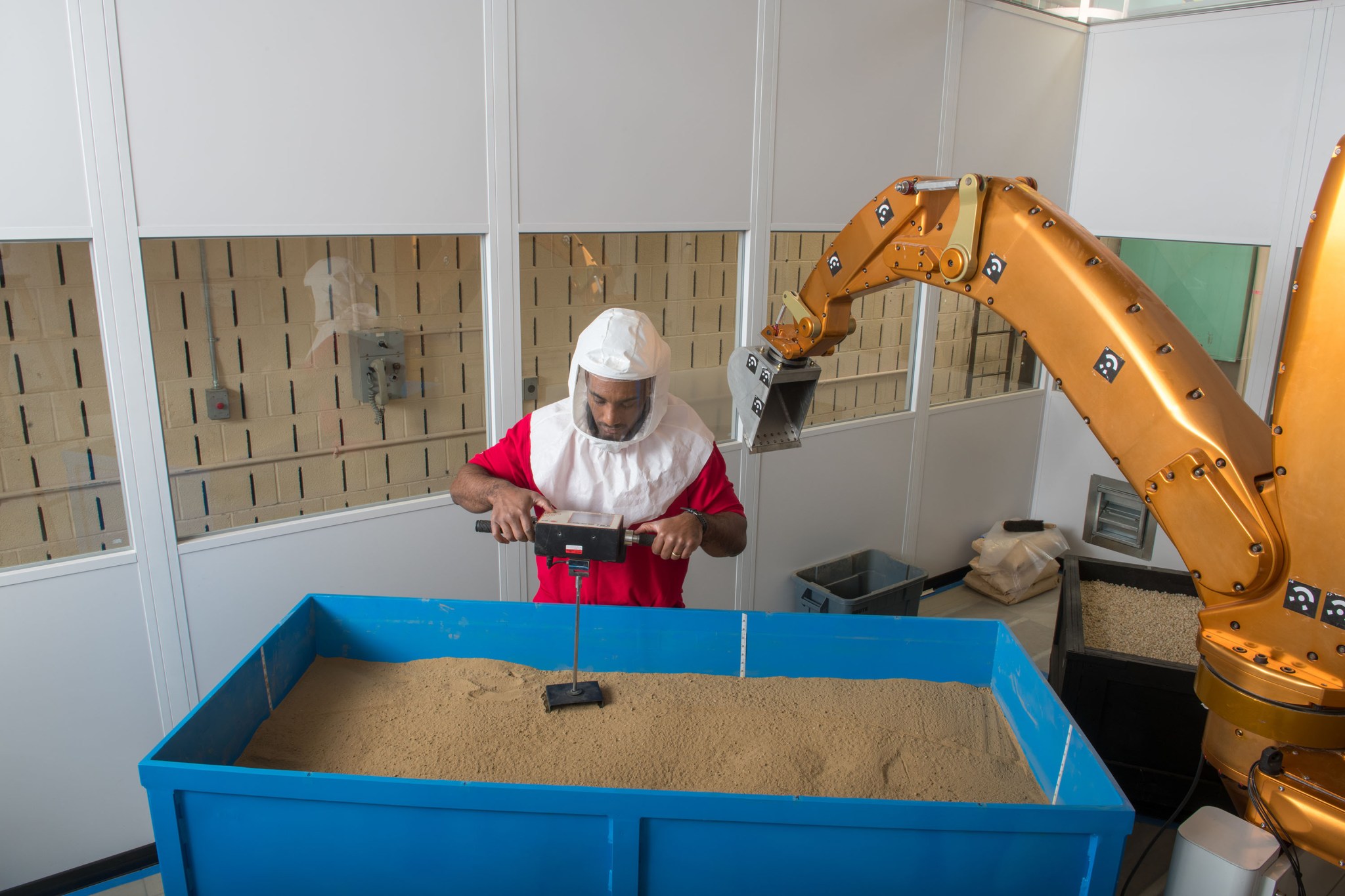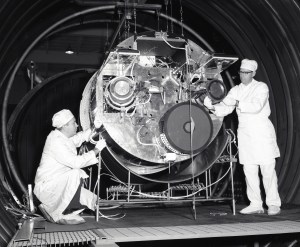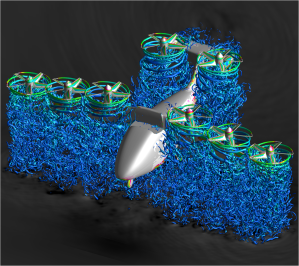
When astronauts live and work on the Moon, they will need access to life-sustaining oxygen, water and other resources. On the Moon, and eventually Mars, they could collect local resources on the surface and transform them into breathable air; water for drinking, hygiene, and farming; rocket propellants and more. It’s a practice called in-situ resource utilization (ISRU).
In order to develop the best ways to find and use resources on the Moon, NASA Glenn Research Center in Cleveland created an Excavation Laboratory to explore effective ISRU methods using an Advanced Planetary Excavator robotic arm along with a shaker table and soil bins.
Using simulants of lunar soil, called regolith, researchers are testing excavation techniques and trying to understand how the digging process on Earth is different from the Moon or Mars.
“When we dig a hole into soil on Earth, we have plenty of weight, due to gravity, to put behind the shovel,” explains Phil Abel, a team manager for the Excavation Lab. “On the Moon or Mars, we may not have the ability to put as much weight behind the shovel to dig effectively due to low gravity and the requirement to design light-weight machines for launch from Earth.”
In addition to measuring the forces of excavation, researchers are also examining how to reduce those forces in order to reduce the necessary amount of vehicle traction.
Since astronauts will be living in space for longer and longer periods of time, carrying all the water, oxygen and rocket propellants needed to sustain life is not practical or affordable.
ISRU could reduce the mass and cost of launching products that are needed to sustain the crew. It could also help power outposts or refuel space vehicles. These critical supplies would be derived from space resources such as the carbon dioxide-rich Martian atmosphere and water on the Moon, Mars and asteroids.
As human space exploration evolves toward longer journeys farther from our home planet, ISRU will become increasingly important.
“We’re excited about this ISRU activity,” Abel said. “This will lead us into the next stages of exploration as we go forward to the Moon and eventually Mars.”



























